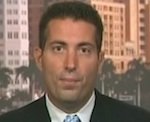
Some public pension plans including the giant California Public Employees’ Retirement System are backing away from hedge funds, on concerns about high fees and middling performance.
More than five years after the global financial crisis and the massively publicized Bernard Madoff fraud, the standard hedge-fund structure of a commingled pool with limited transparency and liquidity is also damping the appeal of the sector.
Separately managed accounts have emerged as the hot alternative over the past half-decade. And while some ‘name brand’ hedge funds such as Bridgewater, Och-Ziff and AQR have the performance record and reputation to thrive with the incumbent structure, most of the rest of the universe doesn’t, and that vulnerability to losing assets under management is heightened near a stock-market top.
“The market is at an all-time high, and when there’s a correction it’s usually fast and fierce,” said Andrew Schneider, chief executive of Family Office Networks, which connects family offices with institutional investors. “If you’re locked up in a fund with a semi-annual or quarterly redemption, that’s not good enough. Investors want liquidity and transparency.”
Schneider drew the distinction between a pension plan investing in hedge funds, which some pensions are questioning, and allocating money to hedge-fund strategies, for which appetite remains strong. The latter option can be managed in a separately managed account at a hedge fund; with an external, non-hedge-fund asset manager; or even in-house, if the pension plan has the capability and infrastructure to do so.

Andrew Schneider, Family Office Networks
Screengrab via CNBC
“I don’t see (pensions) going out of hedge-fund strategies,” Schneider said. “If CalPERS liquidates a long-short fund, they’re going to keep most of that money managed in a hedged way, but it’s going to be done via separately managed accounts versus an LP structure.”
“Hedge-fund strategies are here to stay,” said Schneider, noting that they have been adopted by some mutual funds aimed at retail investors.
Outside of the biggest hedge-fund names, the preponderance of capital raised is earmarked for separately managed accounts, said Schneider, who based his observation on discussions with about 50 single-strategy hedge funds over the past month.
“SMAs offer transparency and better liquidity,” he said. “Hedge funds had their glory days as a reclusive and exclusive investment opportunity, but by 2005-2006 the allure of hedge funds started dying down.”
“There are always anomalies, hedge funds with $8 or $10 billion that have been doing well for 20 years,” Schneider continued. “But the majority of funds are not getting new money into their funds. They’re getting it through SMAs.”
Structure aside, the recent scale-back in hedge funds by some pension plans may be just a blip in a broader, long-term increase in exposure to the asset class. “Pension plans will significantly increase their exposure to mid-sized hedge funds over the next 10 years,” Don Steinbrugge of Ashcroft Partners wrote in a recent whitepaper. “The pension fund industry is in the process of a major evolution in its use of hedge funds that has implications on what percent of their portfolio they allocate to hedge funds and how they achieve their hedge fund exposure.”
Featured image via Xuejun li/ Dollar Photo Club

